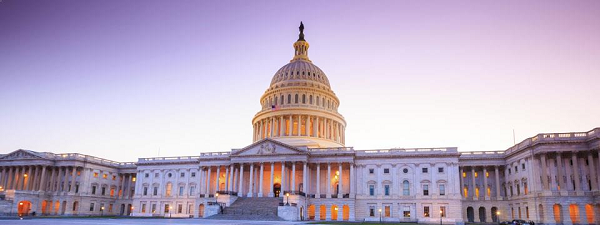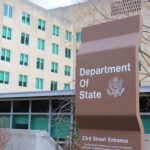Since Ken Cuccinelli’s June 10, 2019, appointment as Acting Director of U.S. Citizenship and Immigration Services (USCIS), the agency has escalated its defiance of its own statutory mandate. Most troubling, instead of fairly and efficiently facilitating legal immigration as Congress intended, under Cuccinelli’s leadership USCIS is systematically obstructing it. In so doing, the agency has evolved into the chief builder of the Trump administration’s “invisible wall,” a far-reaching set of policies and practices that restrict access to, or even end, vital immigration benefits.
Last week, the House Committee on Oversight and Reform announced that Cuccinelli would testify before the Subcommittee on Civil Rights and Civil Liberties in connection with USCIS’s August 7, 2019, elimination, and subsequent reinstatement, of deferred action adjudications. The lead-up to his testimony presents an essential moment to take stock of that August policy shift along with other changes directed by Cuccinelli. Below is a non-exhaustive list of 10 destructive measures advanced during his tenure.
- Elimination of Deferred Action
Without any public notice, on August 7, 2019, USCIS eliminated its adjudications of non-military deferred action requests at field offices. Deferred action temporarily prevents the deportation of vulnerable individuals, including children with serious medical conditions such as cancer and cystic fibrosis, who face compelling, and often life-threatening, circumstances. The August 7 change in policy placed many such children at risk of deportation to countries lacking essential medical treatment—effectively handing them a death sentence. Only after public outcry and aggressive congressional oversight did USCIS reinstate its prior policy. Questions persist over whether the agency will fairly and efficiently adjudicate deferred action requests moving forward.
- Public Charge “Wealth Test”
USCIS led the August 14, 2019, issuance of a Department of Homeland Security (DHS) public charge “wealth test” that, in addition to chilling the use of vital public benefits nationwide, threatens to substantially limit the ability of low- and middle-income noncitizens to obtain green cards and pursue a future in America. Already, the Department of State has published a draconian rule designed to largely mirror DHS’s. When asked to address this wealth test’s incompatibility with the Statue of Liberty’s call to “give me your tired, your poor,” Cuccinelli offered a restrictionist revision of that passage, then suggested that the statue’s inscription pertained only to European immigrants. At present, the public charge rule remains enjoined by multiple federal courts. If implemented, the regulation will profoundly constrain legal immigration to, and in, the United States.
- Assignment of USCIS Personnel to ICE and CBP Enforcement Duties
Despite USCIS’s crisis-level delays in processing applications and petitions for immigration benefits, the agency has diverted hundreds of personnel to Immigration and Customs Enforcement (ICE) and Customs and Border Protection (CBP) enforcement functions. During a July 16, 2019, congressional hearing on processing delays, USCIS testified under oath, “So what are we doing to shorten the time it takes for applicants to get their decisions? We are taking advantage of the resources we have.” The next day, a report surfaced that USCIS was in fact reassigning resources outside of the agency by soliciting USCIS staff volunteers to perform work for ICE. On October 16, 2019, USCIS not only acknowledged such reassignments, it trumpeted them, touting that during the current fiscal year 233 “employee volunteers…were deployed directly to the nation’s southern border…in support of U.S. Customs and Border Protection. Others were deployed to offices across the country providing critical legal services and mission support to U.S. Immigration and Customs Enforcement.” Another report indicates that USCIS may issue a regulation transferring over $200 million in applicant and petitioner fees out of USCIS and into ICE. These initiatives make evident that USCIS is prioritizing the missions of DHS’s enforcement agencies over its own statutory mandate to efficiently administer our legal immigration system.
- Updated U Visa Law Enforcement Resource Guide
On July 31, USCIS published an updated “U Visa Law Enforcement Resource Guide” that threatens to make it more difficult for victims of crime to obtain humanitarian protection. For petitioners to qualify for a U visa, law enforcement agencies generally must issue certifications of those individuals’ cooperation. But the July revisions to the resource guide, including heightened attention paid to the discretionary nature of certifications as well as to law enforcement’s prerogative to withdraw existing certifications, could inhibit future issuance, creating barriers to potentially life-saving relief.
- Asylum Ban 2.0
On July 16, 2019, DHS and DOJ published a regulation widely termed the “Asylum Ban 2.0.” This rule blocks virtually all non-Mexican nationals who enter the United States through the southern border from obtaining asylum—which, it should be emphasized, is a form of legal immigration. After a September 11, 2019, Supreme Court ruling made the regulation effective nationwide, Cuccinelli affirmed, “[w]e’re ramping this up as quickly as we can logistically.” USCIS is playing a central role in the ban’s implementation. At the same time, the agency continues to conduct screenings that impose an unduly high legal standard on arriving asylum seekers subject to the “Remain in Mexico” program. These screenings have overwhelmingly resulted in affected individuals’ forced return to Mexico pending a court hearing, despite widespread kidnappings and sexual assaults of protection-seeking populations below the southern border.
- Closure of International Offices
During Cuccinelli’s tenure, USCIS has closed four international offices, while announcing plans to shutter numerous others by August 2020. The work of these offices in processing immigration cases and furnishing in-person information assistance reflects what USCIS itself has recognized are the “unique needs and circumstances” of U.S. citizens and noncitizens abroad. By shutting down these operations, USCIS is undermining the quality of immigration services provided to U.S. military personnel, U.S. citizen parents seeking to adopt international children, families awaiting reunification, refugees requesting protection, and numerous other affected populations.
- Weakened Case Processing Goals
Under Cuccinelli, USCIS has responded to its case processing delays by weakening its own standards for timeliness. During a July 16 congressional hearing, USCIS outlined various prongs of its backlog reduction plan, one of which is to “Redefine Processing Time Goals to Better Reflect True Cycle Times”—in effect, to change goals to accommodate underperformance rather than to change performance to meet goals. In a subsequent letter, USCIS confirmed that it had “updated processing time goals to better reflect operational realities,” though the agency has not publicly disclosed the new benchmarks. Given that USCIS calculates its “net backlog” based principally on the number of cases pending outside of processing time goals, laxer standards could send the net backlog into freefall, projecting a misleading impression of improved agency performance that masks continued deterioration of USCIS services.
- Narrowed Definition of “Residency” for Some U.S. Military Families
On August 28, 2019, USCIS issued guidance set to go into effect on October 29 that redefines “residence” as it relates to certain children of U.S. service members stationed abroad. Whereas under prior policy, these children would have acquired citizenship automatically, as a result of the new guidance, affected parents will have to undergo a lengthy application process to secure their children’s citizenship. This needless change in policy sparked panic among U.S. troops around the world, harming morale and undermining combat readiness.
- Shortened Window Before Credible Fear Interviews
On July 8, 2019, USCIS cut from 48 to 24 hours the mandatory waiting period before the agency conducts credible fear interviews of detained asylum seekers. This reduction undermines due process rights by leaving affected individuals without sufficient time to secure counsel or prepare for their interviews. Meanwhile, USCIS is handing off many credible fear interviews to law enforcement personnel unsuited to perform humanitarian adjudications. One report indicates that, “by August, a total of 60 [CBP] agents were due to conduct their first credible-fear interviews. A new group started training in early September…” This initiative will likely result in substantially higher rates of negative determinations.
- Elimination of Filipino World War II Veterans Parole Program
Cuccinelli has asserted that “[l]eaders at every level of government have a solemn responsibility to look after the men and women who have put their lives on the line for our country.” Yet on August 2, 2019, USCIS announced that it would terminate the Filipino World War II Veterans Parole Program, under which the agency has paroled into the United States close family members of Filipino-Americans who fought under the American flag during World War II. These loved ones often serve as caretakers for the veterans, many of whom are in their 90s. USCIS’s elimination of the program threatens to break apart the reunited families, leaving veterans without essential care and support in their final years.
Taken together, these measures constitute an abandonment of USCIS’s duty to fairly and efficiently facilitate legal immigration. AILA urges Congress to hold the agency fully accountable during Acting Director Cuccinelli’s upcoming testimony and beyond.







